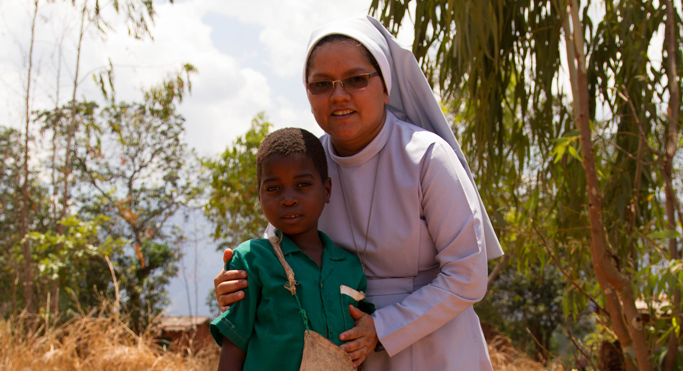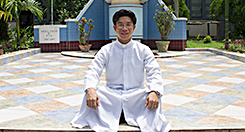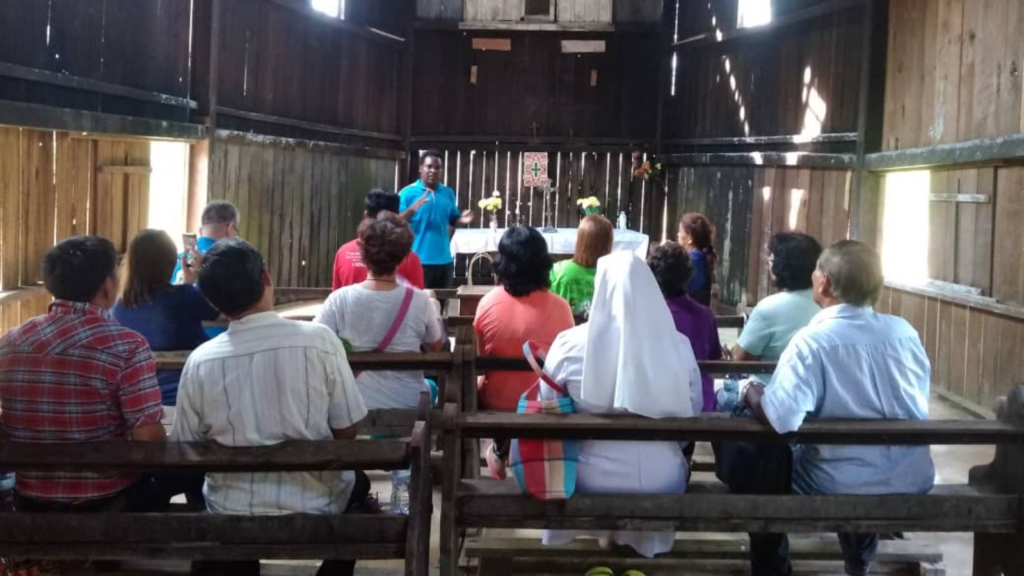Fr Mathews MHM serves the communities in Sarawak, Malaysia. In the Spring edition of Mission Today he updated us on how 2021 had opened up opportunities as well as presenting great challenges. In this fuller account, we find out more about the local culture and the long Mill Hill tradition of helping people in need.
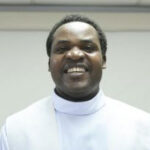 Last year in Sarawak, we were spared the direct effects of the COVID-19 crisis. Though movement was restricted and all Church activities suspended, our areas nevertheless largely remained unscathed.
Last year in Sarawak, we were spared the direct effects of the COVID-19 crisis. Though movement was restricted and all Church activities suspended, our areas nevertheless largely remained unscathed.
2021 was different. The cases started in January with a funeral vigil in one longhouse and spread like wildfire. Now, in our areas of Mission the daily cases are so many that the hospitals cannot contain the sick any more: make-shift isolation centres have been made, stricter movement control orders have come into effect, and churches are still closed.
The culture of our area
We work mainly among the Indigenous ethnic groups in Malaysia. The people here are notoriously religious, in the sense that every activity or stage of life has accompanying religious rites. These mainly involve sacrifices and offerings to their gods. They believe in many portents and signs, to the extent that sometimes they cannot carry on with their day-to-day activities after sighting particular birds. Many also believe that certain birds and animals are bad omens, and if they hear their sounds in the forest or see them passing by, they have to go back to their homes and stay the whole day for the fear that they may meet some misfortune. As you can imagine this is quite disruptive to daily life.
Interestingly, many of the local people who want to learn about Christianity tell us that nowadays most of them do not know the right way of going about their traditional sacrifices and offerings, which they believe can turn disastrous if not done correctly. Therefore, they ask to be instructed to become Christians so that they can use Christian blessings during their various religious activities.
By being here, and going about life reaching out to the community and living our example, we have faith the missionary Church here givespeople hope and courage in the face of the fear perpetuated by some of the more outdated traditions.
In England and Wales, Missio partners with the Mill Hill Missionaries through the Red Box. Please support our work today>>
The History of the Mill Hill Mission in Kanowit
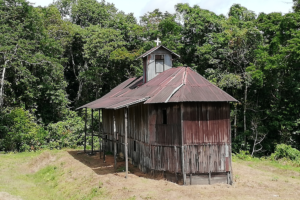 Kanowit was the first mission station in Borneo and is rich in the history of the church in this area. For instance, Bawan church, an outstation of Kanowit Parish, is so significant in the history of the Mill Hill Missionaries – often referred to as a ‘gem in the jungle’! Built in 1898, it was the third church built in Borneo, after Kuching in 1891 and Kanowit in 1887.
Kanowit was the first mission station in Borneo and is rich in the history of the church in this area. For instance, Bawan church, an outstation of Kanowit Parish, is so significant in the history of the Mill Hill Missionaries – often referred to as a ‘gem in the jungle’! Built in 1898, it was the third church built in Borneo, after Kuching in 1891 and Kanowit in 1887.
But while Kanowit and Kuching have long since been replaced with new buildings, the original Bawan Church remains standing. I think it must now be the oldest remaining church building in east Malaysia. Unfortunately, the old church building is now so dilapidated that it’s crying out for restoration. I have started to look for some local donations so that we do not lose this treasure.
There is such a rich history of development of the Church in this area. During the pandemic, I had some time to collect pictures and other documents, andhelp build a small gallery to preserve the history of Mill Hill Missionaries in Borneo, as well as the history of Kanowit Parish.
The Mill Hill Missionary Difference
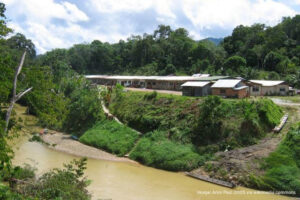
The Mill Hill Missionaries’ presence has made a lot of difference to Kanowit. Mill Hill Missionaries came to the Borneo part of Malaysia in 1881. At that time formal education was a new idea and there were no hospitals. It was the Mill Hill Missionaries who started the first school and clinic here, and continued to serve people through these services, in addition to direct pastoral outreach. It was only in 1984 (a hundred years later) that a state hospital was built in Kanowit!
The local people live in longhouses, and regular pastoral outreach to them has been the hallmark of the Mill Hill Missionaries’ presence in Kanowit. These longhouses are built as one unit with many families living in each one. Sometimes there are more than a hundred families in one longhouse. And in Kanowit Mission there are around 400 longhouses; 300 of which have at least a few Catholics!
Many of the locals have been impressed by the commitment of Mill Hill Missionaries and continue to praise Mill Hill Missionaries for the determination to reach out to the people in Mission, which they say make a big difference in their lives.
The ‘last, least and lost’
Most importantly, our mission here involves serving and giving hope to those people whom society deems the ‘last, least and lost’. These are the people who, even though they have lived in Malaysia since the 1960s, still do not have national identity cards and are therefore considered non-citizens. As non-citizens they do not enjoy many privileges. For example, as others get free education and free medical care, these people have to pay handsomely in order to get these services. So the Mill Hill Missionaries have also been making sure that the younger generationhave access to education including higher education, while helping their parents to start small businesses and boost their standards of living.
There are so many ways in which people’s lives have changed. I am so glad and grateful that we can truly preserve the history of the Mill Hill Missionaries here, and to keep building a vibrant future by sharing God’s love with the community.
Help us continue the tradition of bringing God’s light and love to the poorest of our sisters and brothers. Please donate to the Red Box today>>
Read more about the Mill Hill Missionaries in Malaysia on Fr Michael’s blog>>

